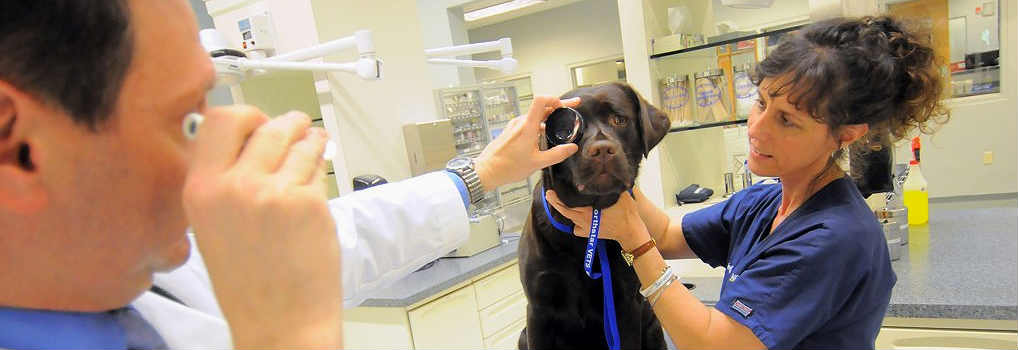
“The reality is we need to have more programs or more seats in the existing programs. We’re learning how to develop very effective remote learning options with clinical experiences. Several programs offer an associate degree remotely so students can live at home or continue working in their veterinary practice while completing their degree.”
James Lloyd, DVM, PhD, Senior Consultant for Animal Health Economics, LLC
The veterinary industry faces a critical shortage of qualified professionals at all levels. With the demand for veterinary services rising, the need for qualified vet staff has never been greater. The current staffing shortages are causing long wait times for pet owners and increased stress levels among those working in veterinary clinics.
Veterinary technicians and nurses, essential members of any veterinary clinic, are part of this critical lack of staff: “There is good news about this shortage. Sure, it is a challenge for all of us, especially for pet owners, but it comes out of a good place in that this profession is so highly valued and sought after. Vet techs are doing good work, making a difference in people’s and pets’ lives. Still, it presents a challenge on how do we keep up with the necessary workforce?” asks Dr. James Lloyd, senior consultant at Animal Health Economics.
Services provided by vet techs can range from medical treatments to monitoring patient progress to educating clients on how to care for their pets properly. Their overarching goal is ensuring each animal receives the best possible care.
They are also responsible for performing laboratory tests, conducting research, setting up examination and operating rooms, dispensing medications, and preparing samples for diagnostic testing. “They’re incredibly well trained and are incredibly valuable in veterinary medicine. They are also often incredibly underutilized and, unfortunately, often underappreciated,” shares Dr. Lloyd.
Becoming a veterinary technician requires specialized training, education, certification, and licensing. At a minimum, vet techs must complete an associate’s degree in veterinary technology. These two-year programs provide the education and training necessary to perform the essential job duties for this career. Graduates of programs accredited by the AVMA Council on Education (COE) and Committee on Veterinary Technician Education and Activities (CVTEA) are eligible to sit for Veterinary Technician National Exam (VTNA). In all but 11 states, individuals must obtain a license to practice.
Keep reading to learn more about the looming shortage of vet techs, how big the problem is, what the causes may be, and what can be done to address it.
Meet the Expert: James Lloyd, DVM, PhD

Dr. James Lloyd is a senior consultant for Animal Health Economics, LLC. He holds a doctorate in veterinary medicine and a PhD in agricultural economics, both from Michigan State University (MSU).
Before his current position, he was the dean at the University of Florida College of Veterinary Medicine. He also served as the associate dean and a professor at the Michigan State University College of Veterinary Medicine. He is an expert in fiscal issues related to the veterinary field. He recently published a comprehensive four-part report titled “Tackling the Veterinary Professional Shortage,” where he details the staffing issues the veterinary field is currently facing.
How Big is the Veterinary Professional Shortage?
According to the report “Tackling the Veterinary Professional Shortage,” written by Dr. Lloyd and published by Mars Veterinary Health, it is hard to quantify just how significant the vet tech shortage is because some vet techs aren’t credentialed. In fact, it is estimated that up to two-thirds of 118,000 professionals working under the title of “veterinary technician” or “veterinary nurse” have not earned a certification or completed a minimum level of education.
Demand for veterinary services continues to grow year over year, and there need to be more vet techs for the number of veterinarians and clinics nationwide. Due to the shortage of veterinarians, there has been a proposal to increase the number of vet techs per DVM from two-to-one to three-to-one, which creates even more demand. Although there are more than 200 vet tech education programs across the country, only an average of 7,500 graduates take the VTNE test each year.
Adjusting for the growth in the market in the coming years, Dr. Lloyd estimates that clinics will need an astounding 132,885 more technicians by 2030. When looking at the rate of students taking the VTNE each year, he estimates it will take more than 30 years to produce enough graduates to meet the demand in the next decade alone.
Causes For The Vet Tech Shortage
According to Dr. Lloyd, there are several causes for this impending lack of available vet techs: “The biggest reason is that we just aren’t training enough veterinary nurses and technicians,” he says. This is one of the primary causes of the large number of uncredentialed vet techs. “There are lots of reasons vet techs don’t earn their credentials. Some staff have undergone the training process and haven’t taken the national credentialing exam. It could be that, and their state doesn’t require credentialing. Practitioners have for quite some time hired people that are bright, eager, and wanting to learn. They train them to a level where they give them the title ‘veterinary technician,’ but in reality, they haven’t completed the education,” says Dr. Lloyd.
Another reason for a higher demand for vet techs is the increased demand for veterinary services: “The demand for veterinary healthcare services in the small animal sector is projected to increase by 33 percent by 2030. The amount of money that pet-owning households spend per year on their pets and pet health care has increased at a compounded rate of almost 3 percent per year over the last 40 years,” shares Dr. Lloyd.
He continues, “The other two things that are happening are a larger proportion of pet-owning households are actually taking their pets to the veterinarian per year, and the proportion of households nationally that own pets has been increasing. The bottom line is that increased spending per pet, an increased proportion of pet-owning households going to the veterinarian, and an increased proportion and number of households owning pets are truly driving demand. The vet tech shortage will only worsen if we don’t expand our training capacity for veterinary nurses technicians to meet it.”
Proposed Solutions to the Shortage
The simplest and most obvious solution is to add more vet tech programs to increase the number of graduates and professionals eligible to sit for the national certification exam. One way that programs are approaching this program is to offer distance learning: “The reality is we need to have more programs or more seats in the existing programs. We’re learning how to develop very effective remote learning options with clinical experiences. Several programs offer an associate degree remotely so students can live at home or continue working in their veterinary practice while completing their degree,” says Dr. Lloyd.
Increasing remote learning will also help the vet tech education community tackle another problem they face. “As we move forward and grow the number of veterinary technicians, we need to focus on diversity, equity, and inclusion. Distance learning will hopefully allow us to increase the diversity in our classrooms because now all you need is an internet connection. The low barrier to entry gives us a great opportunity to recruit a diverse representation of students,” says Dr. Lloyd.
“If we can reach into those underserved communities that are marginalized for reasons such as socioeconomic status or culture or whatever, we can bring them into our virtual classrooms and help us diversify the profession.”
Another solution to the vet tech shortage is providing legislative protection for their title: “We need title protection for vet techs. It’s time that we get on board and recognize that you can’t be a veterinary nurse or technician if you haven’t had the training,” shares Dr. Lloyd. “People do a tremendous job with on-the-job training, but if we’re to be taken as professional, we have to have a standardized credential that everybody recognizes and guarantees a high skill level and competency.”
While it may seem counterintuitive to provide title protection for professionals in this field, ensuring only appropriately credentialed professionals use the title will raise the bar and draw more people to this field.
As more professionals enter this field with online programs and potential title protection, high job satisfaction will help keep them in this career. According to Dr. Lloyd’s research, most clinics only use about 30 percent of a vet tech’s skills and abilities: “Lack of full professional engagement limits career advancement, career satisfaction, and compensation for veterinary nurses/technicians, resulting in significant recruitment and retention issues,” he writes in his report.
Job satisfaction can also come from the opportunity for upward mobility. Currently, there is no credential distinction between an associate or bachelor’s degree in veterinary technology. “There is a lot of discussion about adding a mid-level provider. Something between a vet tech and a veterinarian to bridge the gap and provide services in that space,” says Dr. Lloyd.
This provider would likely be, at minimum, master’s level educated and have a similar scope of practice as nurse practitioners in human healthcare. The increased use of Veterinary Technician Specialists (VTS) can also create a space for upward mobility. VTSs are vet techs who have received additional specialized training in a particular field, such as anesthesia, surgery, or dental.

